Customer Satisfaction Score (CSAT) is a metric used by many customer service teams across industries (and often other departments), that measures how satisfied customers are with a company, its products, support, and other business services.
It might not seem like much at first, but measuring customer satisfaction — or dissatisfaction — is the most important KPI for 75% of customer support leaders. Before you dive into an action plan to improve customer satisfaction, check out how to measure it first.
How to measure customer satisfaction
Customer satisfaction surveys are based on one simple question: How satisfied are you with the service/product/experience?
To know the answer, you first have to show it to your customers and let them score your business on a predefined rating scale. Most customer satisfaction surveys use 3-, 5-, or 7-point scales, but it doesn’t mean that yours can’t be different.
No matter the scale you choose, you have to define what a positive experience means for you. For a 7-point scale, for example, you could treat 6 and 7 as excellent customer service satisfaction levels.
Now, for the fun part:
To calculate customer satisfaction for a given time period, sum up all positive responses, divide them by the number of all the responses received, and multiply by 100:
Customer Satisfaction Score calculation: (The number of positive reponses / The total number of responses) * 100
For example, if you received 100 responses and 50 of them were positive, your CSAT score would be 50% (50 positive responses / 100 total responses * 100 = 50%).
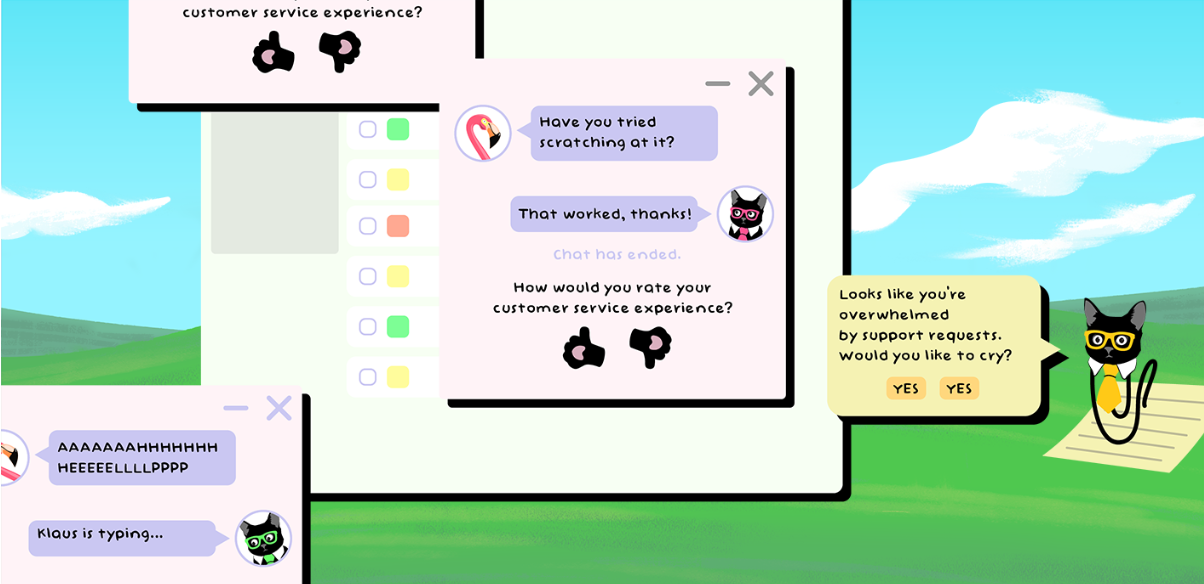
How to increase customer satisfaction levels
It’s normal that when you don’t see your CSAT scores as high as you’d like, you immediately start looking for areas in your support system to address. But…
- Where should you be looking?
- What exactly should you be looking for?
- How do you go about addressing these issues in a way that actually improves your CSAT scores?
- Is your CSAT actually that low to start with?
According to the latest Customer Service Quality Benchmark Report, the CSAT benchmark for 2023 is 85%. If you still feel like your CSAT needs some work, an action plan to improve customer satisfaction might be exactly what you need.
What is an action plan to improve customer satisfaction?
An action plan to improve customer satisfaction has specific steps that help you improve CSAT in the long run.
A detailed action plan to improve customer satisfaction
- Give your agents the tools and training they need to thrive.
- Encourage your agents to answer queries promptly.
- Proactively address areas of dissatisfaction before they appear.
- Analyze customer satisfaction across the entire lifecycle.
- Work on increasing customer satisfaction survey response rates.
- Reach out to customers who gave you a negative CSAT rating.
- Review support interactions to get more insights into customer satisfaction.
- Foster a culture of empathy in your organization.
- Build an efficient feedback loop to show you’re listening.
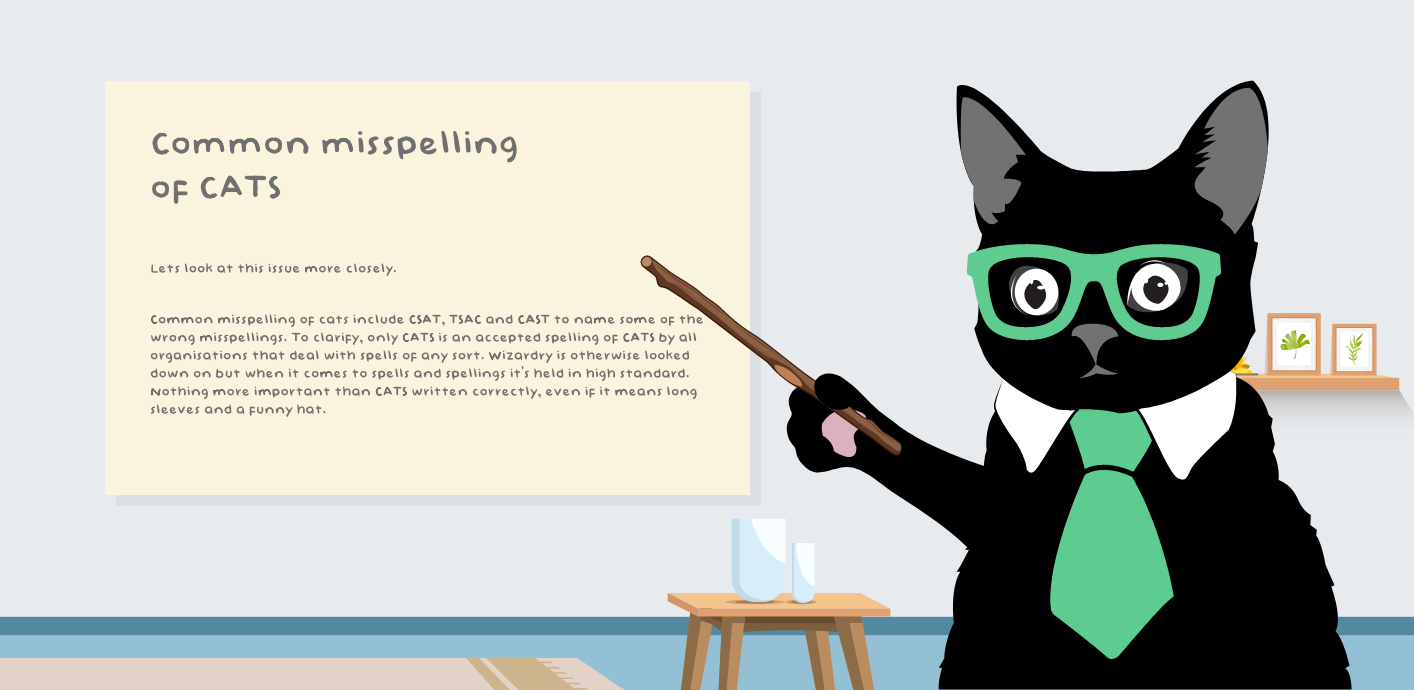
1. Give your agents the tools and training they need to thrive
When we talk about CSAT, a word that you’ll often hear thrown around is customer experience.
But an equally important yet overlooked aspect is the agent experience.
If you’re trying to deliver delightful experiences to your customers, your agents must be in the best position to do so.
- When picking customer service software, you’ll obviously want ones that match your budget and have the feature set you’re looking for. But it’s equally important that your agents enjoy using it as this impact will carry over into the quality of customer interactions they have.
- Additionally, you’ll want to actively involve your support agents in the decision-making process (in all areas, not just picking tools) rather than just handing down orders.
- You’ll also want to be in regular contact with your team to provide them with all the resources they need to succeed in the form of regular customer service training activities, team meetings, and 1-to-1s with your agents.
- Lastly, keep an eye on the motivation levels and make sure your support team always feels appreciated, whether that’s through shout-out channels on Slack, fun group activities, swag packages, surprise gifts, etc.
Simply put, improving the agent experience usually translates into improving the customer experience and helps you achieve the kind of CSAT scores you’re aiming for.
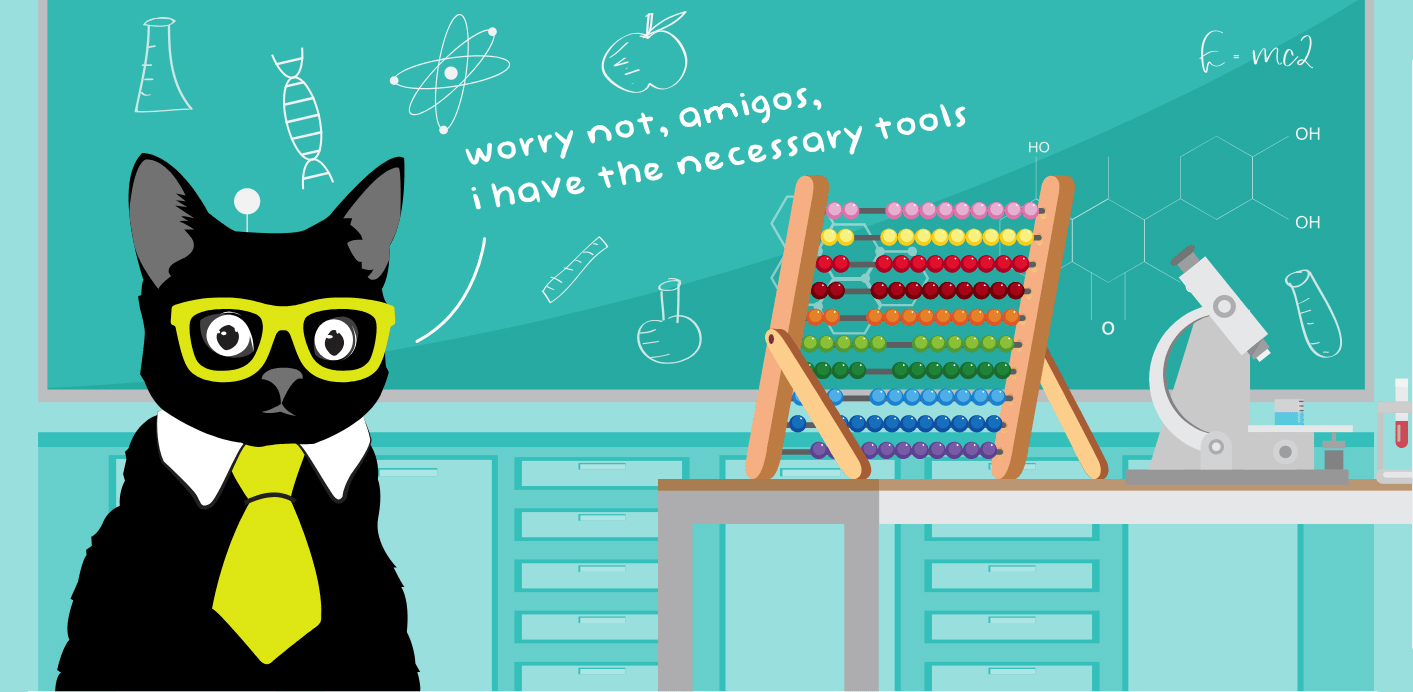
2. Encourage your agents to answer customer queries promptly
Speed is often the king and your response times have a huge impact on your CSAT score. Your customers expect fast, helpful responses with a human touch. And anything else can show itself adversely via the CSAT scores your customers provide.
Try to cut down on your first response and average handle times:
- Break down your average response time by an agent to identify those not hitting their targets. Find out what’s slowing them down and suggest ways they can improve their workflow.
- If a group of agents seems to be struggling, you should consider conducting a training session. This will help you get everyone on the same page about how and when to respond to case submissions. It will also reinforce that response time is a metric that you’re striving to optimize for.
- You can decrease your response time by adding other faster customer service channels (like live chat) on your website to give your customers more options. However, avoid spreading yourself too thin by trying to be active on more channels than your team can handle.
- If you have a high volume of cases submitted during non-business hours and on weekends, you might want to consider rescheduling shifts. This is especially useful if you’re serving customers across multiple time zones.
- Encourage the use of canned responses, templates, and shortcuts that eliminate the need to come up with custom responses to the same questions while also reducing the number of keystrokes needed to send a response.
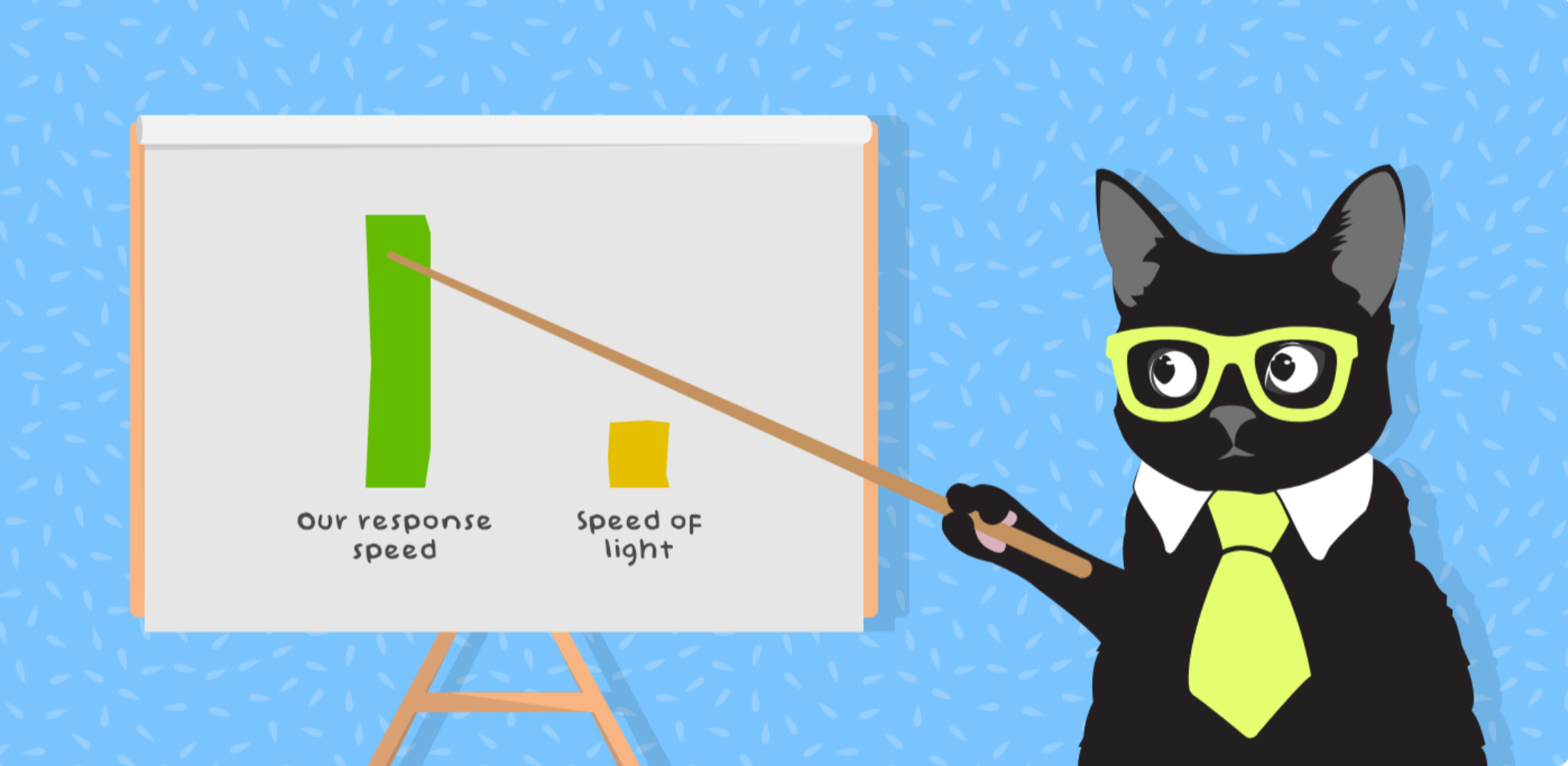
3. Proactively address areas of dissatisfaction before they appear
No matter how good your product and service are, customer dissatisfaction is unavoidable. But there are still ways you can address these issues and offer proactive customer service before you start noticing your CSAT decreasing:
- Map out the journey your customers take, list out all the obstacles they may face along the way, and create a CSAT improvement plan that prevents each one of those hypothetical scenarios from taking place.
- Create a community for your customers to talk to themselves and use this space to better understand how customers use your product, what they think about new features you’re going to launch etc.
- Go through the support interactions of churned customers (and the corresponding notes) to prevent the same thing from happening with other customers.
- Stay up to date with what your customers are saying on review sites and social media. You can even take this a step further and try to capitalize on areas where your competitors are doing poorly.

4. Analyze customer satisfaction across the entire lifecycle
Pay attention to when you send CSAT surveys. Usually, feedback surveys are sent:
- After the purchase
- With feature releases and product updates
- Before the subscription renewal date
- After support interaction
Checking in on how your customers are feeling at different points in the customer lifecycle can give you an overview of your service quality. Analyze your customer journey (more on that in a bit!), review your support goals, and find the most important touchpoints where you could benefit the most from customer feedback.
Keep in mind that customer satisfaction is likely to be high at the very beginning of the customer journey, but if it decreases along the way, you should investigate what’s dragging your CSAT down.
Timing plays a crucial role in feedback surveys, as it can impact your response rates as well as the accuracy of the results. The longer you wait to send a customer satisfaction survey after a support interaction, for example, the less likely you are to receive any response.
Speaking of…

5. Work on increasing customer satisfaction survey response rates
When collecting Customer Satisfaction surveys, the most valuable feedback often comes from open-ended comments. This option allows people to express their feelings more freely than just “ticking boxes”. The problem is:
- The average CSAT response rate is 19% for chat, 5% for email, and 5% for phone.
- Only 19% of all CSAT ratings have a comment beside the score. If you’re using chat, you only receive written feedback from 3% of your customers. On email or phone, it’s less than 1%.
- Source: Customer Service Quality Benchmark Report
Apart from asking for feedback at the right moment (and doing so regularly), you can also get higher response rates for your customer surveys if you:
Detailed feedback is always best – when customers add comments, it gives you far more context for their opinions.

Not convinced? Increasing customer satisfaction survey response rates is important for several reasons:
- Increased data accuracy and reliability: Increasing response rates helps in gaining a more representative sample of customer opinions. When a higher percentage of customers respond to a survey, the data becomes more accurate and reflective of the overall customer sentiment. This ensures that decisions made based on the customer survey data are based on a more reliable and comprehensive understanding of customer satisfaction.
- Benchmarking and comparison: Higher response rates enable meaningful benchmarking and comparison of customer satisfaction over time. By consistently gathering feedback from a significant proportion of customers, you can track changes in satisfaction levels, identify improvements or declines, and assess the impact of initiatives implemented to enhance customer experience. These benchmarks provide valuable insights into the effectiveness of strategies and help set realistic goals for future CSAT improvement plans.
- Continuous CSAT improvement: Increasing response rates promotes a culture of a continuous CSAT improvement plan within your organization. It demonstrates a commitment to actively listening to customers and valuing their feedback. By encouraging more customers to participate in CSAT surveys, you can create an ongoing dialogue with their customer base and allow for iterative improvements to products, services, and customer experiences.
Once you get more responses, it’s time to dig deeper into your customer satisfaction scores.

6. Reach out to customers who gave you a negative CSAT rating
Poor customer service experiences ending with negative reviews? Don’t worry about it too much. They can actually boost customer loyalty and retention in the long run.
The service recovery paradox shows that customers often feel more loyal to a business after a problem has been fixed than if they never had a problem at all.
Ask your dissatisfied customers about what went wrong and try to fix it if possible. You can either set up an automated follow-up survey flow targeted at those who gave a bad CSAT rating or reach out to each one of them personally. This depends on your capacity and support volume.
Great customer service feedback? Use it! Feature positive reviews on your website and work with your marketing team to make the most of it. And remember to thank the staff who made those customers happy!

7. Review support interactions to get more insights into customer satisfaction
Is CSAT a good measure? Yes. But should it be the only customer service KPI to look at? Not at all.
External quality metrics like Customer Satisfaction Score (CSAT), Net Promoter Score (NPS), or Customer Effort Score (CES) only tell you half of the story. They reflect how satisfied your customers are with what you do.
However, they say nothing about, for example, how well your agents followed the internal guidelines, or even if they provided a correct and full solution to the customer’s inquiry.
Sometimes, customers might not get the bigger picture. They might be upset over something that’s not really in your team’s hands. In other words: if a customer gives a bad rating because they wanted a feature that wasn’t planned, it doesn’t mean your service was poor.
To really understand how you’re doing, you should review customer support interactions and measure your Internal Quality Score (IQS). This helps you see if customer feedback matches what you expect.
In fact, regular QA reviews with quality assurance software like Zendesk QA (formerly Klaus) will give you unique opportunities to track how your team is doing over time and show you areas where you can improve. So while support QA isn’t directly related to CSAT, it helps you focus on areas that’ll improve customer satisfaction.
Don’t just take our word for it:
8. Foster a culture of empathy in your organization
Empathy is arguably the most sought-after skill you look for when hiring for customer service — with good reason.
If your customers feel like they are being listened to and understood, they’re more likely to trust you. Which eventually translates into receiving better ratings on the CSAT surveys you send out.
However, for it to be effective it needs to be ingrained as a part of your company culture. Here are some tips to help you do just that:
- Hire people with a passion for helping who share the same mission and values that you hold dear.
- Ensure your onboarding process for new agents lets newcomers know how you expect them to communicate with your customers and covers things like voice and tone, language and structure, formatting, etc.
- Dedicate your early conversations with new clients completely to learn about their needs, workflows, and the customers they serve.
- Measure the empathy displayed by your team by creating a separate QA scorecard category that contributes to your overall Internal Quality Score. Additionally, you could even consider increasing its weightage or marking it as a critical category (which means that if a conversation receives a negative rating in this specific category, the entire conversation is marked as failed).
We use KHC (Kind, Honest, Confident) as our categories in the IQS program. IQS gives us the space to learn how to help customers feel the love. CSAT just tells us if it’s working—and it does! This paradigm has powered several teams from the high 70s for CSAT into the upper 90s.
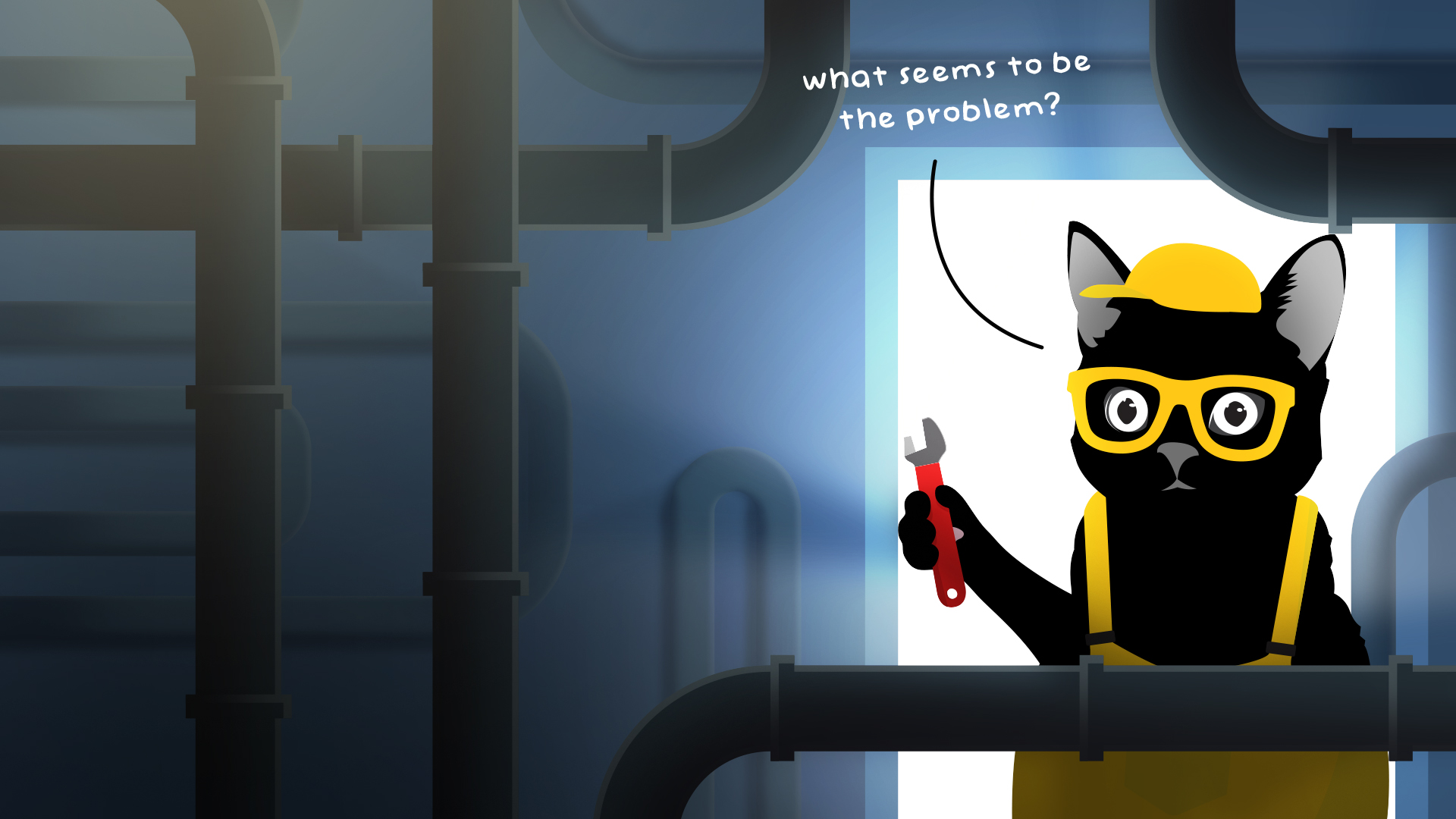
9. Build an efficient feedback loop to show you’re listening
We already touched upon how important it is to make your customers feel heard.
And this includes taking notice of feedback given by your customers and addressing them immediately.
1. Proactively asking for feedback verbally at the end of an interaction.
2. Adding survey links at the end of each message.
3. Following up on every feedback we received, good and bad.
4. Connect customers who left negative feedback with the department with which their troubles originated.
5. And most importantly, changing my team’s approach to service helped to improve the overall customer experience.
Besides using different techniques to actually collect feedback, you’ll also need to have an efficient way of articulating it internally and projecting the voice of your customer.
There’s no better way to show your customers that you’re listening than by incorporating their requests into your product.
Now, of course, this won’t always be possible. But even in such cases, you can still show them that they’re being heard by having one of your Product Managers directly explain why a particular feature isn’t being built, for example.

Focus on providing quality service, CSAT will follow
Ever-increasing customer expectations mean that as opposed to just one, you’ll need to combine multiple techniques to effectively boost customer satisfaction levels. When applying the customer satisfaction tips above, you should start seeing more satisfied and loyal customers.
Make sure to tailor this action plan to improve customer satisfaction to your needs. The truth is, as long as you always strive to deliver your customers the best experience possible, high CSAT scores will follow.
Originally published in April 2022; last updated in October 2023.









